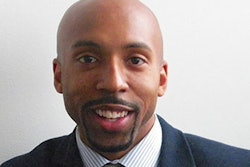When comedian Kenan Thompson provided his impersonation of coach Deion Sanders on a recent presentation of Saturday Night Live, he may not have intended to introduce a variation on the vernacular that’s generally used within academic communities, but that’s exactly what happened. After a reference was made to Jackson State University as an Historically Black College or University (HBCU), Thompson made a parallel observation about Harvard University as an Historically White College or University (HWCU), rather than using use the term Predominantly White Institution (PWI), that is commonly employed to identify this cohort of similar racially identifiable colleges and universities.
 Dr. William B. Harvey
Dr. William B. Harvey
Those of us who operate within the academy often tend to create a romanticized vision of the work that we do, and of the institutions in which we conduct our work. We become uncomfortable when negative attributions are assigned to our places of employment, preferring to view them as sanctuaries within a society that has obvious and distressing shortcomings, especially when dealing with issues that have racial overtones. But, the white supremacist underpinning of the larger society has also been reflected in the evolution of the American academy, and the contemporary higher education system maintains and incorporates the racist inequities that can also be seen within the other social institutions.
In his seminal book, Ebony and Ivy, Craig Wilder offers a compelling narrative on the hand-in-glove relationship between white supremacy and the initial development of the American academy. Here, Wilder examines the historical trajectory of the higher education enterprise from its beginning through the establishment of several colonial era institutions, starting with Harvard, whose founders and benefactors were involved in various aspects of the slave trade. He describes, with precision and ample documentation, the various ways in which racialized thought and support for slavery were incorporated into the founding and development of the intellectual norms of America’s colleges and universities.
Ebony and Ivy details how race-based mindsets and slavery were foundational in the creation, development, and intellectual status quo of the pioneering institutions of higher learning, where institutionalized racism became embedded as part of the curriculum. A particularly interesting finding that emerged from Wilder’s research was the realization that when the first documented case of a black person enslaved in the colonies occurred in the 1830’s, he was identified as a servant to Harvard’s first students.
But academic racism was certainly not limited to the persecution and dehumanization of kidnapped Africans. The indigenous people who the European settlers encountered were also the victims of racist ideas and practices, which were perpetrated by both individuals and government officials. Native Americans were also cast as obstacles to advancement and the higher education establishment supported the deterministic view that white people would eventually become the sole inhabitants of North America. Further, the blatantly prejudiced value orientation of the HWCUs played central roles in the development of race-based science.





















